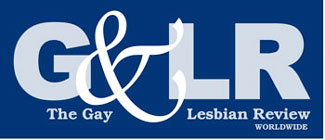THE TITLE of this issue borrows a phrase from Billie Holiday’s signature song, “Strange Fruit,” but without the lurid imagery (the song is about a lynching). Repurposed, the phrase refers to the qualities of both strangeness and fruitiness that these articles seem to share. The term “fruit” has long associations with the gay community—a slur, but surely the least noxious one—and as for strangeness, read on…
Taking these articles chronologically, we start with Laurence Senelick’s exposé of a secret society of “highborn sodomites” in the court of Louis XIV in 17th-century France. The strangeness of these guys is perhaps a function of the society in which they lived, where the everyday attire was so over-the-top that they really had to go all out to make a fashion statement. Their creed was the avoidance of all sexual contact with women, which left open the pursuit of each other, and above all young men and boys, with whom they did not confine their activities to what we would call “plain vanilla” sex. Scandal ensued, and only the King himself could eventually put a stop to it.
Leaping ahead two centuries, readers may be surprised to discover an article on Mark Twain, whose heterosexual creds seem unassailable. Sure, the relationship between Huck and Jim has raised some eyebrows. And then there’s that bizarre incident in Huckleberry Finn when two traveling hucksters come to town and sell tickets to a bawdy show “for men only.” William Benemann reveals that the original version was far raunchier, going back to a stage performance that Twain had seen in his youth titled “The Burning Shame” that involved male nudity and simulated buggery. Wiser heads prevailed, and this passage in the novel was dialed way down.
Moving into the 20th century, Margaret Vandenburg takes us to a phenom later dubbed the “Pansy Craze” or “Queer Craze,” which forms the basis for her new novel Craze. It happened during the “Roaring Twenties”: the era of Prohibition, speakeasies, and a spirit of “anything goes” in cities like New York and Chicago. Among the permissible diversions were what we would call drag shows, though the sight of cross-dressing men was not confined to the stage but spilled into the city streets. It also spilled into the literature of the time, from a highbrow novel like Virginia Woolf’s Orlando to a weekly New York tabloid called Broadway Brevities.
The arc of permissiveness is carried forward by Ronald Val-diserri in a piece about a 1934 novel titled Butterfly Man, by Lew Levenson. By now the culture had entered the darker period of the Depression and the Hays Code and a backlash against the “loose morals” of the previous decade. Levenson’s novel dives into the gay demimonde of this era but turns it into a cautionary tale. It’s clear that Levenson was part of this world and knew it well, only now it was de rigueur to present it as ugly and dangerous and ultimately fatal for those who went there.


